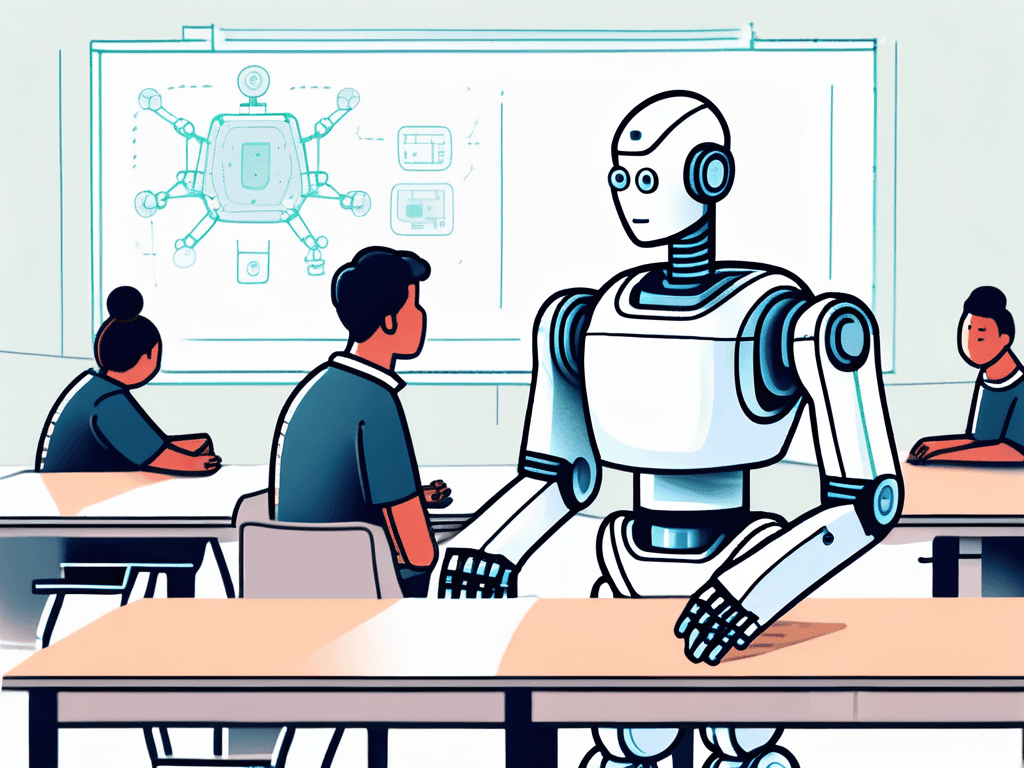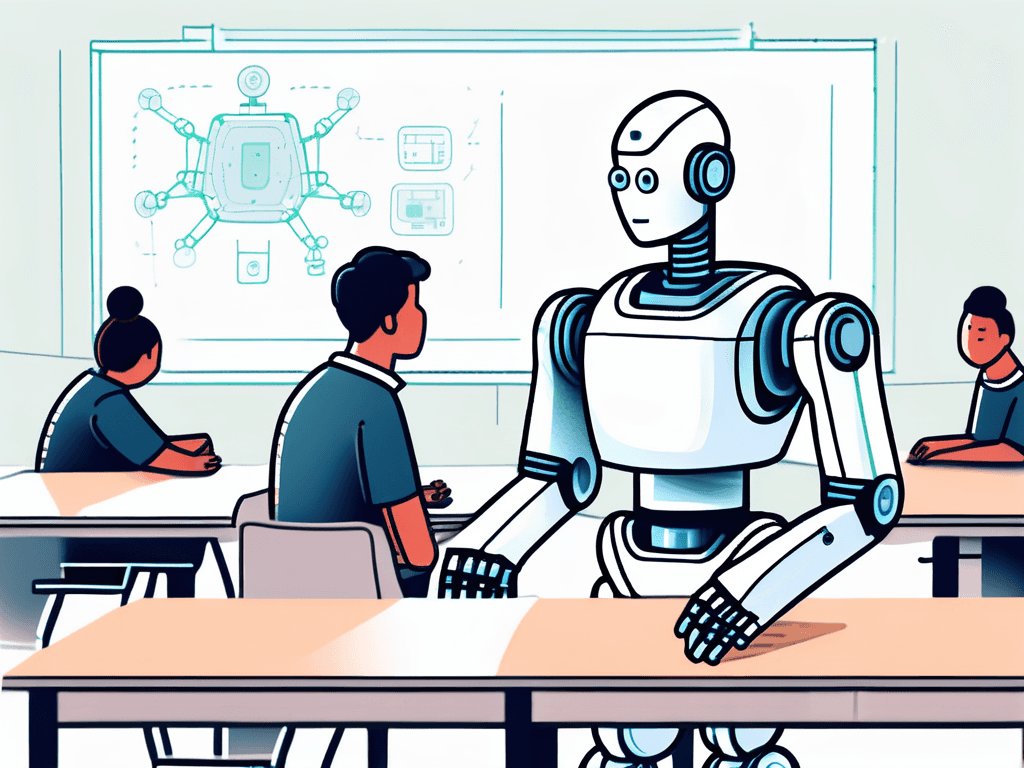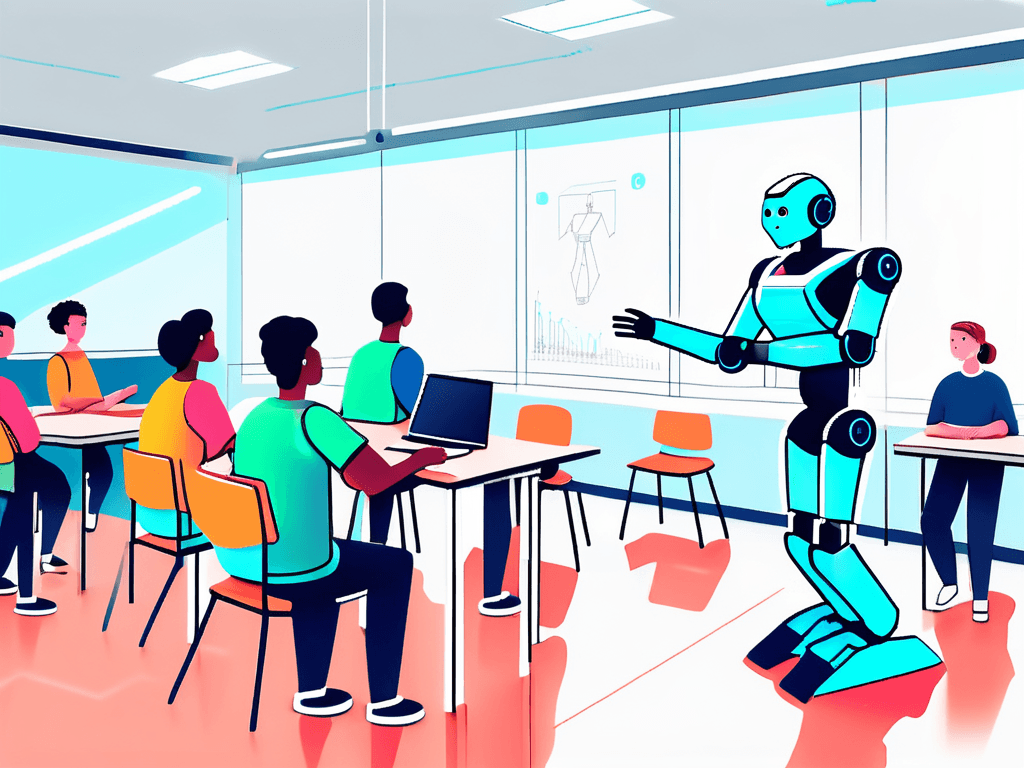AI in Education: Possibilities of Teacher AI
By a Former K-12 Teacher Turned AI Aficionado
Mar 28, 2025

Artificial Intelligence (AI) has penetrated multiple sectors and revolutionized the way we live and work. Education is no exception to this trend. Over the years, AI in education has evolved significantly. Initially, AI was primarily used to automate administrative tasks and provide basic support to teachers. However, advancements in machine learning and natural language processing have paved the way for more sophisticated education applications. As technology continues to advance, the role of generative AI in education has become increasingly prominent. In particular, the incorporation of Teacher AI, such as TeacherToolAI by TeachShare has had a significant impact on the education landscape. This comprehensive guide will explore the definition, key features, roles, benefits, challenges, and the future of education with AI implementation.
A live preview of AI for Teachers to start the article:
Understanding Teacher AI: Definition and Key Features
What is Teacher AI?
Teacher AI refers to integrating artificial intelligence and AI-powered tools and technologies in educational settings to enhance teaching and learning experiences and increase student learning. It encompasses a wide range of innovative applications, including intelligent tutoring systems, teaching assistants, virtual reality simulations, and personalized learning platforms.

Key Features of Teacher AI
1. Automated Adaptive Learning
Teacher AI offers various features that contribute to its effectiveness in education. One of the key features is its ability to responsibly collect and analyze student data, including performance metrics, learning styles, and individual strengths and weaknesses. This data-driven approach allows teachers to tailor instruction to meet the unique needs of each student. Additionally, Teacher AI is designed to continually adapt and optimize the learning process, providing personalized guidance, support to students, and creating engaging educational experiences.
2. Immediate Effective Student Feedback
Another important feature of Teacher AI is its capacity to offer real-time feedback and assessment. Teacher AI can analyze student responses and provide targeted feedback, enabling students to understand their progress and take immediate action.
Click here to take yourself to Teacher AI
3. Virtual Simulations for Immersive Learning Experiences
Teacher AI can create virtual environments and simulations that facilitate interactive and immersive learning experiences embedded with intentionally designed educational content. These simulations not only enhance student engagement but also enable students to apply knowledge to real-world scenarios.
4. Active 21st Century Skills Implementation
Collaboration and communication with peers is important in AI-infused classrooms. Through online platforms and chatbots, students can interact with their peers, exchange ideas, and engage in collaborative projects. This not only enhances their social and communication skills but also promotes a sense of community and teamwork within the classroom while collaborating with teacher-monitored and designed virtual assistants.
Click here to take yourself to Teacher AI
5. Personalized Curriculum
Additionally, Teacher AI can assist in the creation of personalized learning paths for students. By analyzing their progress and performance, AI algorithms can recommend specific learning resources, activities, and assessments that align with their unique needs and goals. This personalized approach helps students stay motivated, engaged, and challenged, ultimately leading to improved learning outcomes. Generative AI can also help educators differentiate for students with disabilities by providing IEP and 504-aligned learning environments to ensure academic success.
The Roles of Teacher AI in Modern Education
Teacher AI plays a crucial role in modern education by enhancing traditional teaching practices and improving learning outcomes. Here are two ways in which Teacher AI is reshaping the modern approach to teaching:
1. Enhancing Personalized Learning
The one-to-one instructional attention of teachers is spread thin in a classroom. In addition, attempting student buy-in with the state-mandated curriculum can be a daunting task. One of the significant benefits of Teacher AI is its ability to provide hyper-personalized learning experiences to each student; empowering effective learning and increasing student engagement. Teacher AI addresses this issue by responsibly gathering data on students' strengths, weaknesses, learning preferences, and interests. Based on this information, it help teachers generate personalized learning materials, enhance existing curricula, suggest appropriate learning activities, and deliver tailored content to maximize student curiosity.
Click here to take yourself to Teacher AI
Another key aspect of Teacher AI is its ability to offer real-time feedback to students on their assignments and assessments. By analyzing student responses instantly, Teacher AI can identify misconceptions, provide explanations, and offer additional resources for further learning. This immediate feedback loop not only helps students understand their mistakes but also encourages them to engage in self-directed learning and continuous improvement. By adapting curriculum and immediate feedback to students, Teacher AI ensures that every student receives personalized attention and support, leading to improved learning experiences and outcomes.
2. Streamlining Administrative Tasks
“We have so much free time!” Said no teacher ever.
There is no doubt Teacher AI and generative AI tools streamline repetitive tasks, freeing up valuable time for teachers to focus on instruction and student support. Tasks such as grading, lesson planning, attendance tracking, and generating reports can be automated using Teacher AI. By automating these mundane tasks, teachers can dedicate more time to developing innovative teaching strategies, engaging with students, providing individualized assistance, and collaborating with colleagues.
Click here to take yourself to Teacher AI
Teacher AI can assist in creating detailed progress reports for each student, highlighting areas of improvement and areas of strength. These reports can be shared with parents, providing them with valuable insights into their child's academic performance and learning journey. By fostering greater transparency and communication between teachers, students, and parents, Teacher AI contributes to a more collaborative and supportive educational environment.
The Benefits of Implementing Teacher AI
The implementation of Teacher AI brings several tangible benefits to the classroom. Let's explore two primary advantages of incorporating Teacher AI in educational settings.
1. Increased Efficiency in Teaching
One of the significant benefits of Teacher AI is its potential to enhance teaching efficiency. By automating routine administrative tasks, Teacher AI allows teachers to allocate more time for instructional planning and delivery. This enables educators to focus on developing creative lesson plans, conducting interactive activities, and providing personalized guidance to students. With the support of Teacher AI, teachers can improve their overall effectiveness and create a more engaging and dynamic learning environment.
Moreover, Teacher AI can analyze vast amounts of student data to identify individual learning needs and preferences. This data-driven approach enables teachers to tailor their teaching strategies to meet the unique requirements of each student, ultimately leading to better academic outcomes. By leveraging insights from Teacher AI, educators can implement targeted interventions and personalized learning pathways, ensuring that every student receives the support they need to succeed.
Click here to take yourself to Teacher AI
2. Improved Student Engagement
Another key benefit of Teacher AI is its ability to enhance student engagement. Traditional teaching methods often struggle to captivate students' attention and maintain their interest. However, Teacher AI can incorporate interactive technologies, such as virtual reality simulations and gamification, to create immersive and dynamic learning experiences. Teacher AI can also effectively and creatively align learning standards to student interests, like sports, music, movies, and more. By incorporating these elements, Teacher AI piques student interest and motivation, leading to higher engagement and active participation in the learning process.
Teacher AI can provide real-time feedback to students, helping them track their progress and identify areas for improvement. This immediate and personalized feedback loop empowers students to take ownership of their learning journey and make continuous strides toward mastery. By offering timely guidance and support, Teacher AI cultivates a growth mindset among students, encouraging them to embrace challenges and persist in their pursuit of knowledge.
Click here to take yourself to Teacher AI
The Challenges of Integrating AI in Education
While the implementation of Teacher AI offers numerous advantages, it is not without its challenges. Here are two primary challenges that need to be addressed effectively.

1. Addressing Data Privacy Concerns
With the collection and analysis of student data being a fundamental aspect of Teacher AI, it is crucial to address data privacy concerns. Educational institutions must ensure that appropriate safeguards are in place to protect students' personal information and maintain confidentiality. Transparency and ethical practices regarding data usage and storage are vital to foster trust and confidence in the adoption of Teacher AI. Many Teacher AI platforms provide IT packets for technology departments to review and approve student-facing AI technologies before platform integration.
2. Overcoming Technological Limitations
Another challenge in integrating AI into education is overcoming technological limitations and equitable access for all school districts. While AI has made significant strides, certain technical barriers still need to be addressed. For example, the availability of reliable internet connectivity and access to hardware devices can be a potential obstacle to widespread adoption. Additionally, the compatibility of Teacher AI tools with existing educational systems and resources needs to be carefully considered to ensure seamless integration.
Click here to take yourself to Teacher AI
The Future of Teacher AI in Education
The potential of Teacher AI to further transform education is significant. Let’s take a closer look at the predicted trends and developments in Teacher AI.

Predicted Trends and Developments
One of the anticipated trends in Teacher AI is the increasing use of virtual AI-powered tutors, which use natural language processing to facilitate more interactive and conversational experiences with students. This will enable students to engage in meaningful discussions, ask questions, and receive immediate feedback from AI tutors, simulating real-life interactions. Additionally, the integration of AI-powered learning analytics will enable educators to gain deeper insights into student progress, develop hyper-personalized and aligned educational content, and provide targeted interventions in real-time.
Click here to take yourself to Teacher AI
Preparing for an AI-Driven Educational Landscape
As AI continues to advance, educators, school administrators, school districts, policymakers, and stakeholders need to prepare for an AI-driven educational landscape. This includes investing in professional development programs for teachers to address their perceptions of AI in education and acquire the necessary skills to develop AI-infused purposefully. Additionally, policies and regulations need to be developed to govern the ethical and responsible use of Teacher AI. Transparent collaborations between educational institutions, technology companies, and AI experts are crucial to drive innovation and ensure the successful integration of Teacher AI in education.
In conclusion, the impact of Teacher AI and all-in-one generative AI platforms like TeacherToolAI by TeachShare on K-12 education and beyond is significant and far-reaching. With its ability to personalize learning experiences, streamline administrative tasks, enhance teaching efficiency, and improve student engagement, Teacher AI has immense potential to reshape the education landscape. However, challenges, such as data privacy concerns and technological limitations, need to be addressed effectively. By staying informed on predicted trends and preparing for an AI-driven future, a collaborative effort from involved parties can use the full potential of Teacher AI to create more inclusive, intentional, effective, and cooperative learning environments.
Click here to take yourself to Teacher AI
At TeacherTool.ai, we’re passionate about making AI in the classroom more accessible and practical for teachers everywhere. We’re committed to ensuring that no school, teacher, or student gets left behind. With our platform, you’ll have access to a wide range of resources, exciting blog posts about the latest in AI for teachers, and practical advice on how to seamlessly integrate AI into your teaching. The TeacherTool.ai team is here to support you every step of the way. Explore our website and tools to start leveraging the power of AI for teachers, and let’s make your teaching experience more impactful, innovative, and advanced than ever before. Together, we can transform education for the better, one classroom at a time.
You may also like…

What’s the Fastest Way to Make A Reading Quiz from an Article?
Mar 30, 2025
Learn how to quickly turn any article into a custom, standards-aligned reading quiz using TeachShare’s AI-powered templates. This step-by-step guide shows teachers how to generate, customize, and share comprehension assessments in minutes—no formatting or manual writing required.

How to Modify Assignments for SPED Students with AI
Mar 30, 2025
Learn how to use AI to adapt lessons and assignments for SPED students quickly and effectively. This guide shows how TeachShare helps teachers personalize materials to meet IEP goals, add scaffolds, simplify instructions, and support diverse learning needs—without starting from scratch.
2024 TeachShare. All rights reserved.
TeachShare
Newsletter